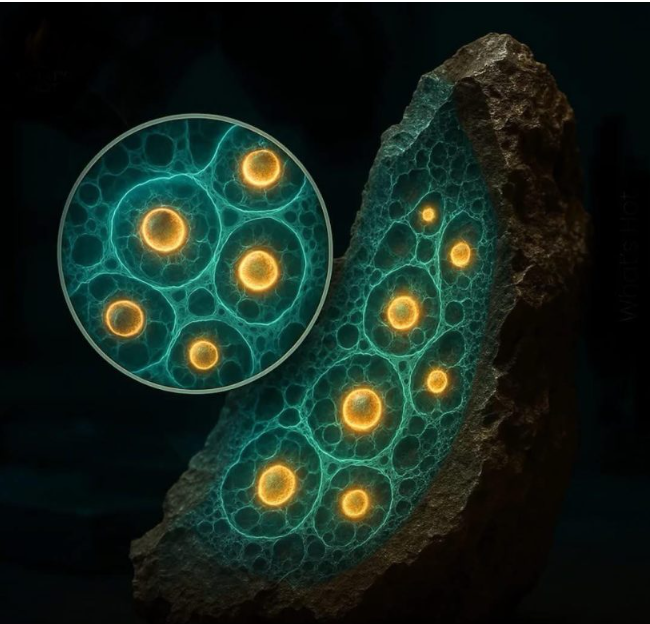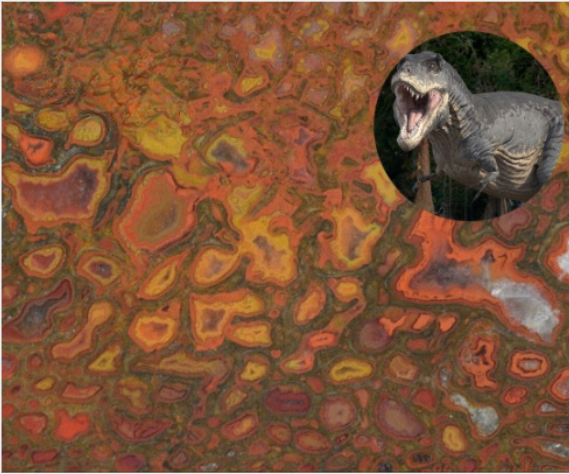Imagine cracking open a fossil and peering into a snapshot of ancient life—one that’s 68 million years old. Sounds like science fiction, right? But guess what? That’s no longer just a dream for dinosaur lovers and Jurassic Park fans. Scientists have just uncovered actual dinosaur cells preserved inside fossilized cartilage—and it’s sending shockwaves through the scientific world.
A Tiny Skull with a Massive Story
The groundbreaking discovery happened inside the fossilized skull of a baby dinosaur, a specimen believed to be from the Late Cretaceous period. Hidden within the skull’s cartilage, researchers found remarkably intact cells. Even more shocking? Some of these cells still showed structures resembling nuclei—the control centers of living cells—and even DNA-like material.

Let that sink in. We’re talking about organic traces in a fossil that’s nearly 70 million years old.
This isn’t just a breakthrough. It’s a potential turning point in how we study ancient life.
Why This Changes Everything We Know About Fossils
Traditionally, fossils are understood as mineralized remains, meaning that any original organic material has long since vanished, replaced by stone-like structures. So, finding cellular preservation at this level wasn’t even on the radar for most researchers.
Here’s what makes this discovery so thrilling:
- It challenges what we thought we knew about fossil preservation.
- It opens the door to a deeper understanding of dinosaur biology at the microscopic level.
- It gives scientists a possible way to study actual dinosaur DNA—something previously thought impossible.
We’re still light-years away from cloning a T. rex (so no, Jurassic Park isn’t happening just yet), but this does give us a tantalizing look at what might be possible in the future.
How Did These Dinosaur Cells Survive?
So, how do cells stay preserved for 68 million years?
It comes down to cartilage—a type of tissue that, unlike bone, doesn’t rely heavily on blood supply and can mineralize more quickly under the right conditions. That fast mineralization likely helped seal off and protect these dinosaur cells before they had the chance to completely decay.
Video : One of the most tragic fossils we’ve ever heard of #science #paleontology
This means cartilage might become the new goldmine for researchers hoping to uncover more microscopic secrets from the dino era.
Think of cartilage like nature’s vacuum sealer—it locked in the cells and shielded them from the ravages of time.
What the Cells Showed Under the Microscope
Once the cells were carefully extracted and studied under high-resolution microscopes, scientists made some astonishing observations:
- Visible nuclei: These dark centers inside the cells are where DNA typically resides in modern living organisms.
- DNA-like structures: Though not confirmed to be fully intact DNA, these strands resemble the architecture of genetic material.
- Cell clusters: The arrangement and morphology of the cells hinted at living tissue organization—not just random mineral formations.
It’s as if the cells had been frozen in time—offering researchers a rare peek into the biological makeup of dinosaurs.
Could We Ever Recreate a Dinosaur from This?
Let’s address the question we’re all secretly thinking: Does this mean we’re on the verge of bringing dinosaurs back to life?
Not quite. While the discovery of nuclei and DNA-like strands is jaw-dropping, the DNA is highly degraded. We don’t have a complete sequence, nor do we know if it’s viable for replication. Plus, the ethical and biological hurdles of recreating extinct species are enormous.

Still, this kind of cellular preservation is the closest we’ve come to touching the biological blueprint of a dinosaur. It may one day lead to synthetic modeling of dinosaur biology, even if we never actually resurrect one.
So, Jurassic Park? Not happening tomorrow. But Jurassic knowledge? That’s advancing fast.
What This Means for Paleontology
This discovery is more than just a scientific marvel—it’s a new frontier for paleontology.
Instead of just studying bones and fossils from the outside, scientists might now be able to look inside, right down to the cellular level.
We could:
- Map out how dinosaurs grew and aged.
- Learn more about their immune systems and cellular structures.
- Compare dinosaur cells with those of modern reptiles and birds to trace evolutionary paths.
In other words, we’re entering an era where dinosaurs aren’t just ancient skeletons—they’re biological puzzles we’re finally beginning to piece together.
What’s Next in the Research Pipeline?
Researchers are now working to:
- Confirm the chemical composition of the discovered DNA-like strands.
- Try to replicate the preservation conditions in the lab to understand how this miracle of survival happened.
- Search for similar cellular traces in other dinosaur fossils—especially those preserved in cartilage.
If more samples are found with similar cell integrity, we might be at the dawn of a completely new field: Molecular Paleontology.
The next big step? Figuring out how much biological information those ancient cells still hold—and how far back in time science can reach.
Video : Perfectly-preserved dinosaur embryo found inside fossilized egg in China
Conclusion: A Discovery 68 Million Years in the Making
The discovery of dinosaur cells with DNA-like structures is not just a headline—it’s a humbling reminder of how much we still don’t know. These fragile, ancient traces have survived eons beneath our feet, waiting to tell their story.
And now, we’re finally learning to listen.
So while we won’t be hatching velociraptors in a lab anytime soon, we’re now closer than ever to unlocking the secrets of prehistoric life at a cellular level. It’s a breakthrough that bridges the gap between the ancient past and modern science—and it could reshape everything we thought we knew about evolution, extinction, and life itself.
Stay curious. The next fossil might just be holding a biological time capsule from a world long gone—but not entirely forgotten.


